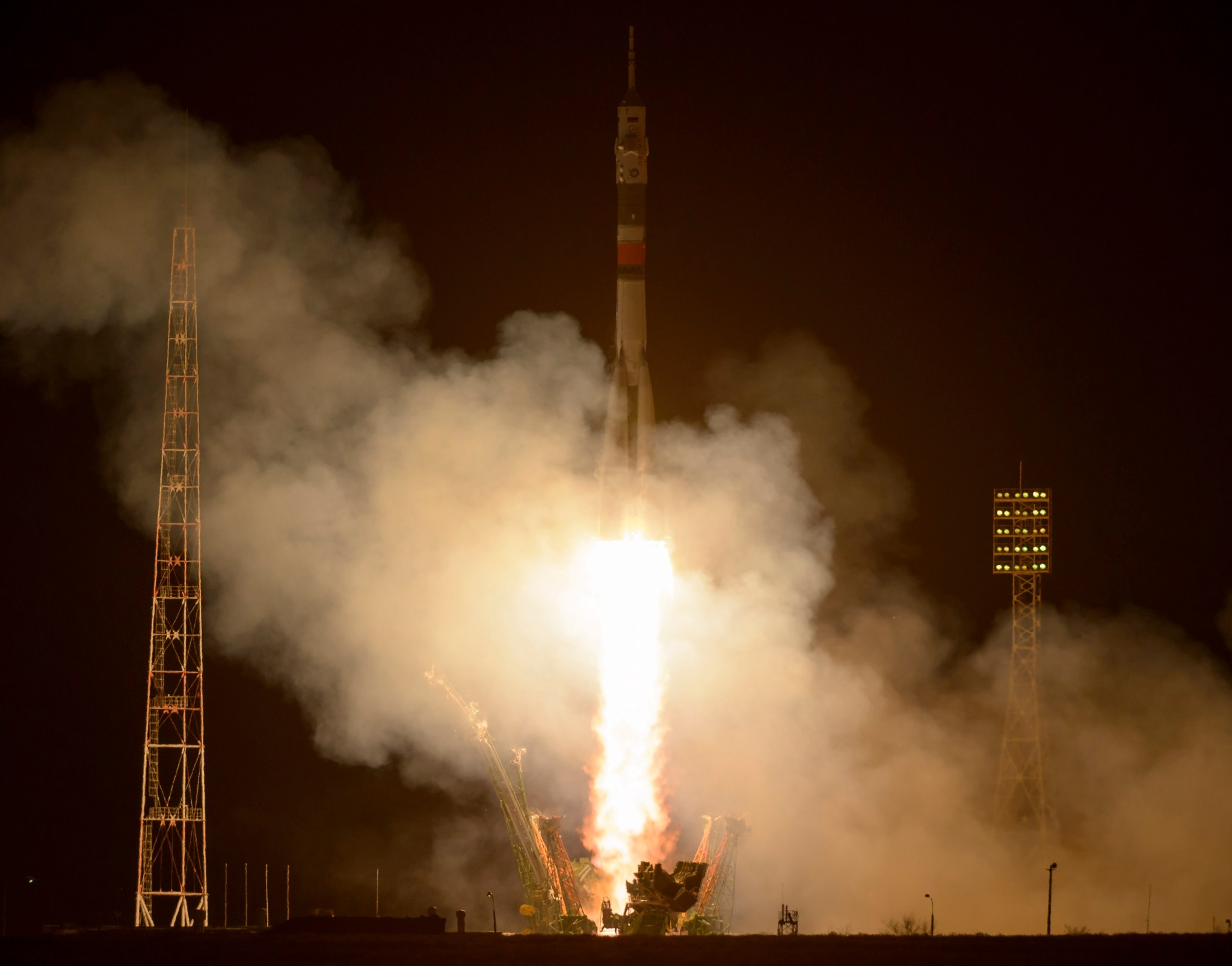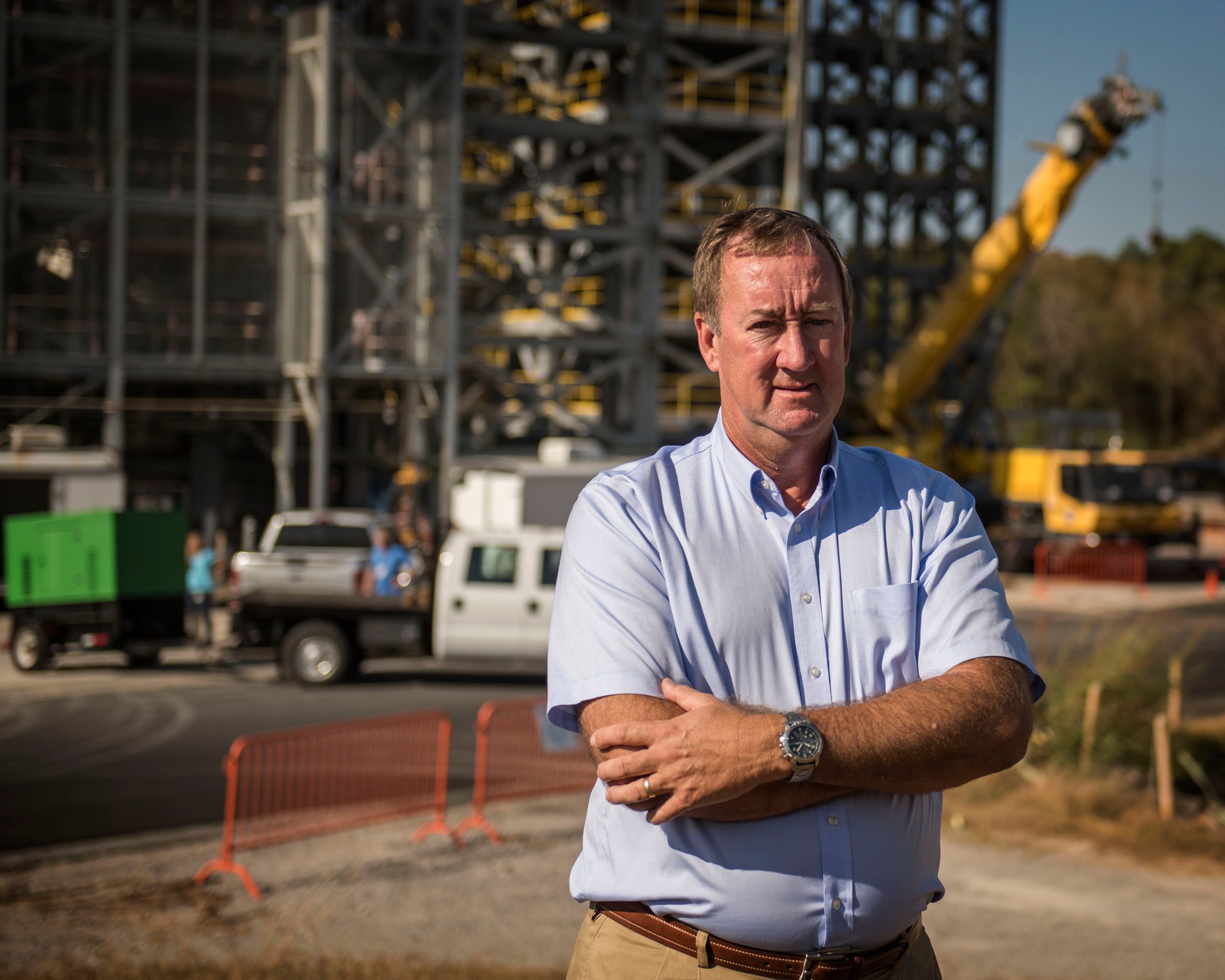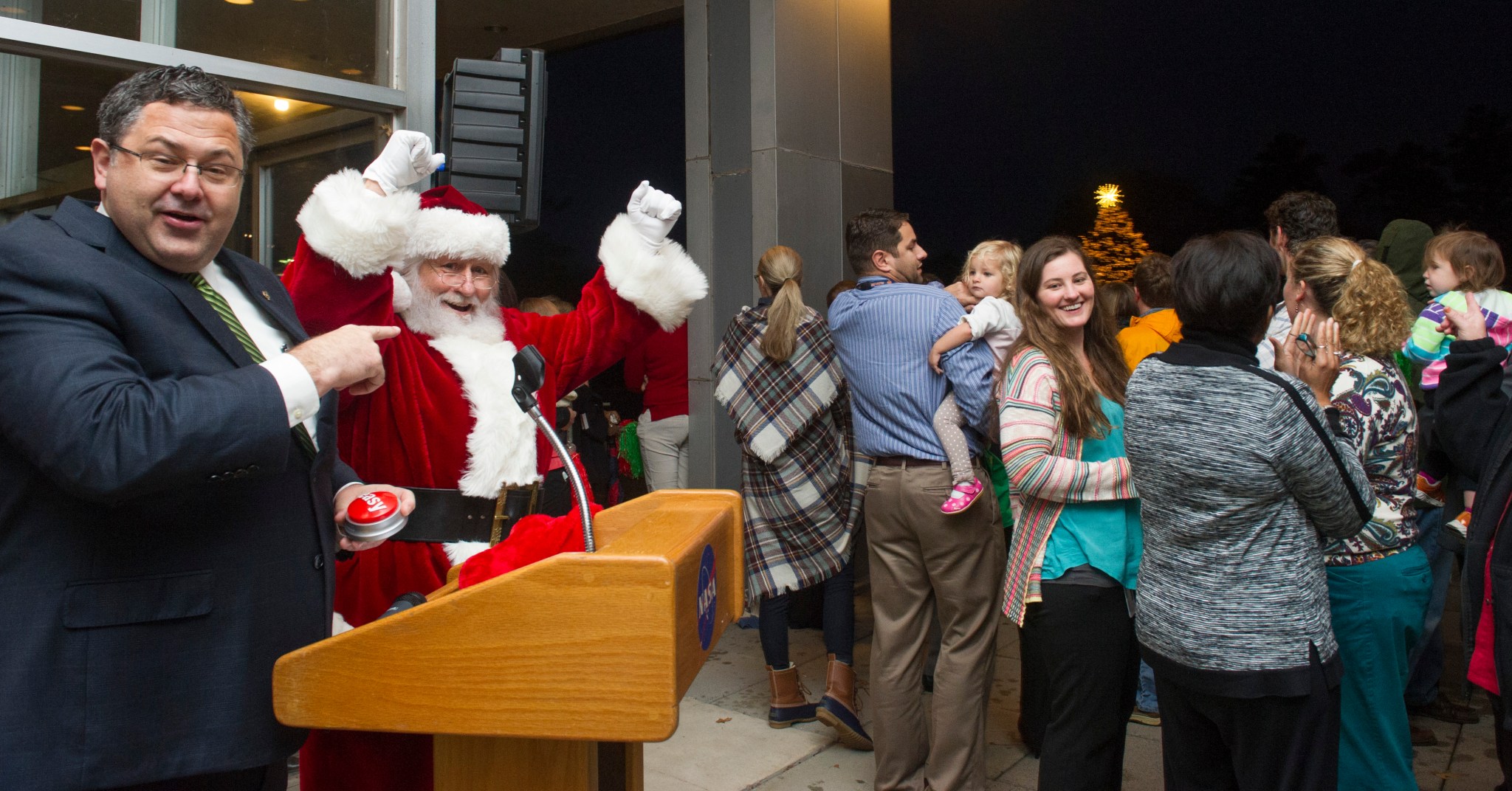In This Week’s Star
- NASA SLS Propulsion System Goes into Marshall Stand Ahead of Big Test Series
- Marshall Center Director Todd May Focuses Team on the Future
- ‘Layering’ Up for the First Flight of NASA SLS
- NASA Astronaut Peggy Whitson Launches on Record-Breaking Mission
- Faces of SLS: Keith Higginbotham
- NASA and University of Alabama Sign Space Act Agreement, Partner to Advance CubeSat Propulsion Technology
- Marshall Team Invited to Celebrate Native American History Month Nov. 29
- Marshall to Set Season Aglow With Dec. 1 Tree-lighting; Team Members Invited
- This Week in NASA History: Apollo 12 Returns to Earth — Nov. 24, 1969
- GOES-R Mission and Supermoon Featured on ‘This Week @NASA’
- Obituaries
NASA SLS Propulsion System Goes into Marshall Stand Ahead of Big Test Series
By Megan Davidson
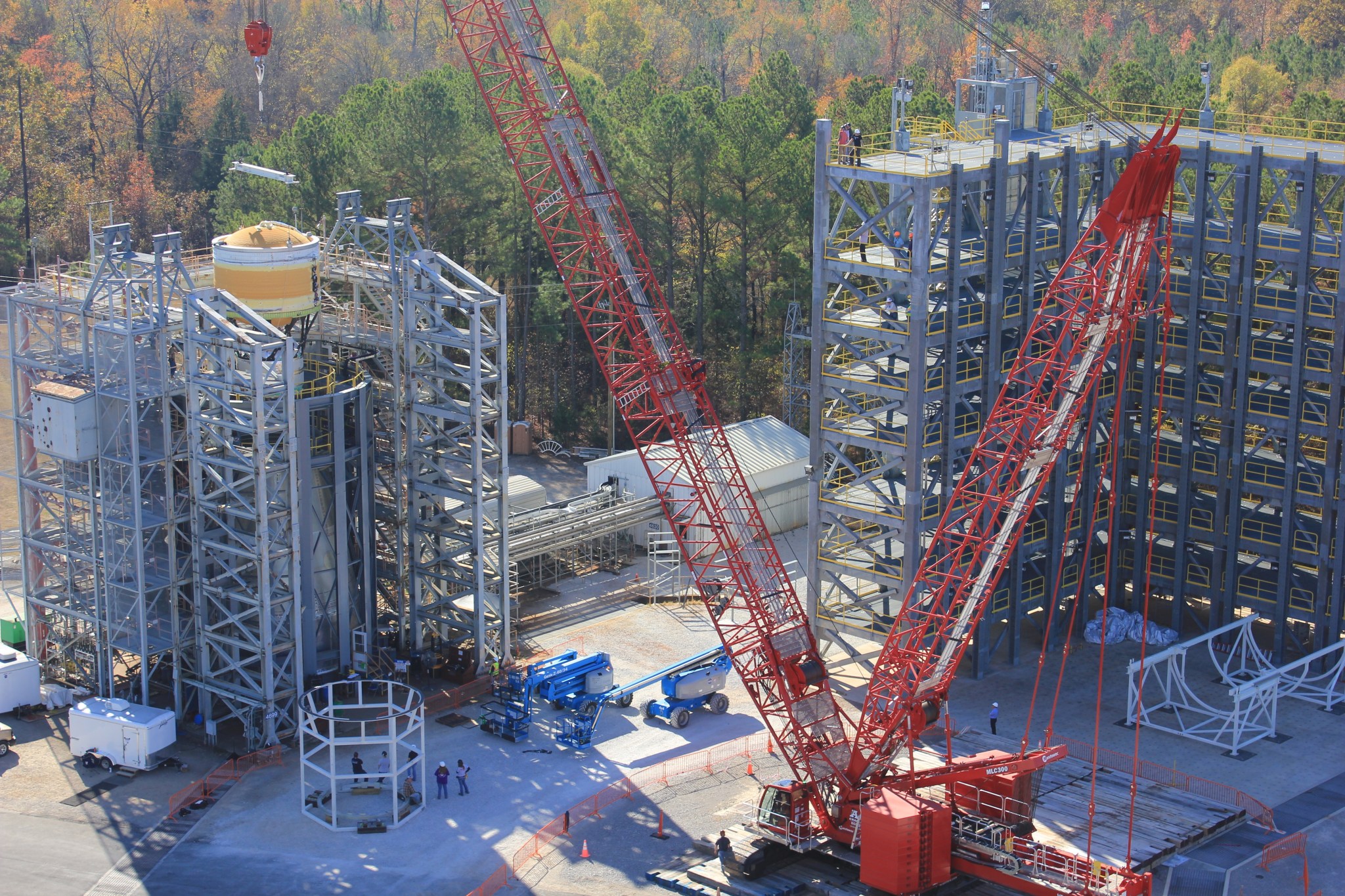
NASA engineers installed a test version of a crucial piece of hardware for the Space Launch System rocket in a 65-foot-tall test stand Nov. 17 at the Marshall Space Flight Center. SLS, with the Orion spacecraft, will be the most powerful rocket ever built to power humans on the Journey to Mars.
The hardware is a test version of the interim cryogenic propulsion stage, which is a liquid oxygen/liquid hydrogen-based system that will give Orion the in-space push needed to fly beyond the moon before it returns to Earth on the first flight of SLS and Orion in late 2018. The ICPS will be stacked with three other test articles and two simulators that make up the upper portion of the SLS rocket ahead of a rigorous test series in early 2017.
“The installation of the ICPS is another big step in getting ready for the test series, which will ensure that the hardware can endure the incredible stresses of launch,” said Steve Creech, deputy manager of the Spacecraft and Payload Integration & Evolution Office at Marshall, which manages the SLS Program for the agency. “In addition to testing, work is underway on flight pieces of the upper part of the rocket, including the ICPS,” said Creech. “NASA and our prime contractor teams are working diligently toward mission success for first flight, and this test series also will provide crucial data to support future missions, including the Journey to Mars.”
The ICPS test article, without the engine, is around 29 feet tall and 16.8 feet in diameter. It is the largest piece of hardware for the test series, and was designed and built by The Boeing Co. in Huntsville and United Launch Alliance of Decatur.
The hardware — some being almost exact to flight specifications — will be pushed, pulled and twisted during the tests. The ICPS joins two other pieces of hardware already installed in the stand. The core stage simulator was loaded into the test stand Sept. 21, with the launch vehicle stage adapter following on Oct. 12. The core stage simulator, a duplicate of the top of the SLS core stage that is approximately 10 feet tall and 27.5 feet in diameter, was designed and built at Marshall.
The LVSA connects the SLS core stage and the ICPS. The LVSA test hardware is 26.5 feet tall, with a bottom diameter of 27.5 feet and a top diameter of 16.8 feet. It was designed and built by prime contractor Teledyne Brown Engineering of Huntsville. The other three qualification articles and the Orion simulator will complete the stack later this fall. Approximately 50 test cases are planned for the upcoming series.
The initial SLS configuration will have a minimum 70-metric-ton (77-ton) lift capability and be powered by twin solid rocket boosters and four RS-25 engines. The next planned upgrade of SLS will use a more powerful exploration upper stage for more ambitious missions with a 105-metric-ton (115-ton) lift capacity.
Davidson, an ASRC Federal/Analytical Services employee, supports the Office of Strategic Analysis & Communications.
Marshall Center Director Todd May Focuses Team on the Future
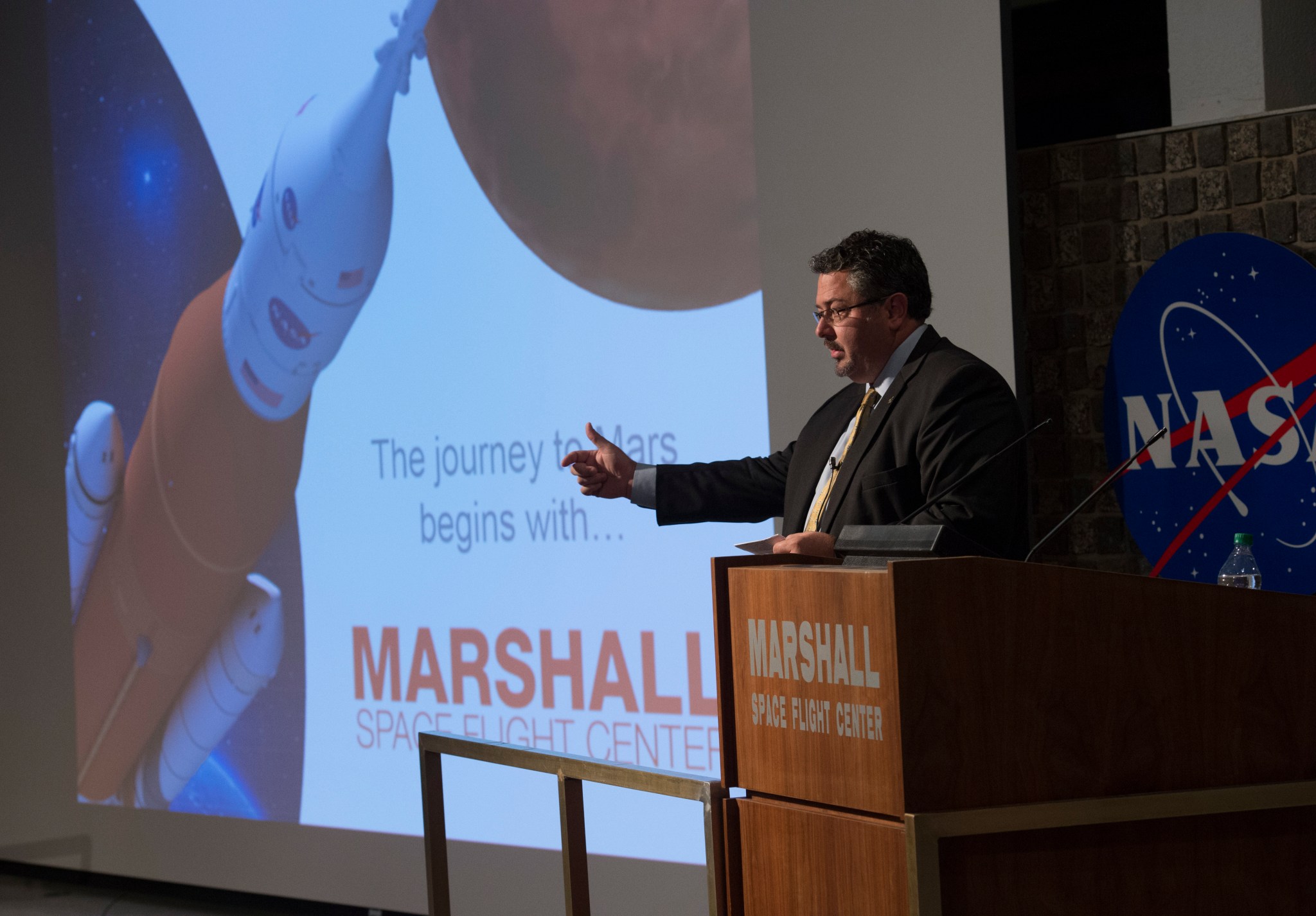
‘Layering’ Up for the First Flight of NASA SLS
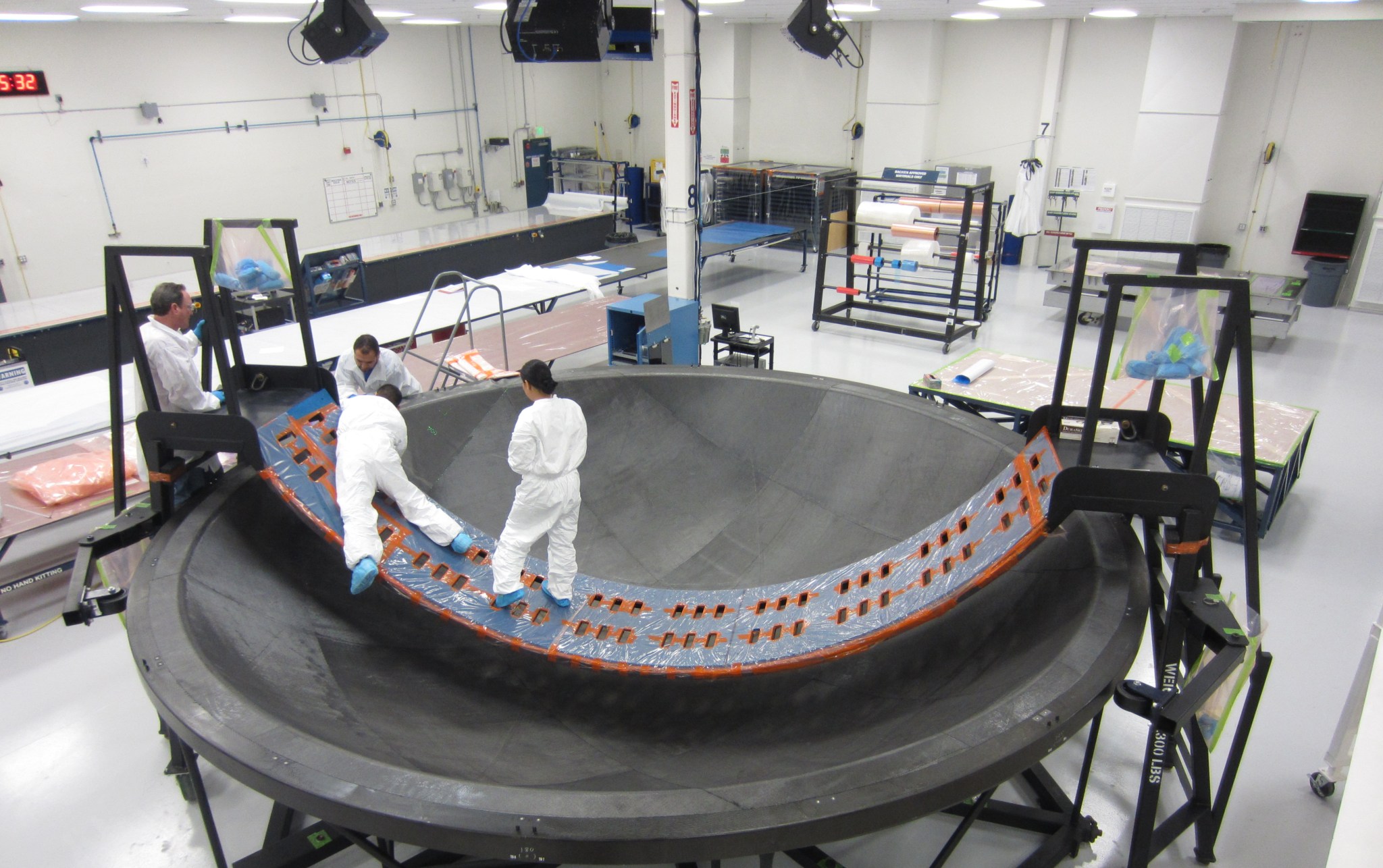
NASA Astronaut Peggy Whitson Launches on Record-Breaking Mission
By Bill Hubscher
Three crew members representing the United States, Russia and France arrived at the International Space Station Nov. 19. Among them was NASA astronaut Peggy Whitson, who will set a new endurance record for cumulative time spent in space by an American during her six-month stay in orbit, breaking the record set by veteran NASA astronaut Scott Kelly.
The Soyuz spacecraft carrying Whitson, cosmonaut Oleg Novitskiy of Roscosmos and Thomas Pesquet of the European Space Agency launched from the Baikonur Cosmodrome in Kazakhstan Nov. 17. The craft docked with the space station two days later and hatches were opened at 7:35 p.m. Nov. 19, returning the official crew complement to six members.
Whitson, Novitskiy and Pesquet joined NASA astronaut Shane Kimbrough and Russian cosmonauts Sergey Ryzhikov and Andrey Borisenko. The Expedition 50 crew members will spend over four months conducting more than 250 science investigations in fields such as biology, Earth science, human research, physical sciences and technology development.
With the launch, the 56-year-old Whitson becomes the oldest woman to fly into space and, in February 2017, she will become the first woman to command the space station twice. Her first tenure as commander was in 2007, when she became the first woman to hold this post. Whitson has an advanced degree in biochemistry, and prior to her selection as an astronaut candidate in 1996, she served in prominent medical science research and supervisory positions at NASA.
Expedition 50 crew members will research how lighting impacts the overall health and well-being of crew members, how microgravity affects tissue regeneration in humans and the genetic properties of space-grown plants.
The crew members are scheduled to receive three cargo craft delivering several tons of food, fuel, supplies and research to the station, as well as new lithium ion batteries to replace the nickel-hydrogen batteries currently used on the station to store electrical energy generated by the station’s solar arrays. These will be installed during a series of spacewalks currently scheduled for January 2017.
Whitson, Novitskiy and Pesquet will remain aboard the station until next spring. Kimbrough, Ryzhikov and Borisenko are scheduled to remain aboard the station until late February 2017.
For more on the International Space Station and the scientific research conducted by crew members, click here.
Hubscher, an ASRC Federal/Analytical Services employee, supports the Office of Strategic Analysis & Communications.
Faces of SLS: Keith Higginbotham
This NASA engineer will be part of putting SLS rocket hardware under pressure! Meet Keith Higginbotham, structural test lead at NASA’s Marshall Space Flight Center.
To be a part of a large project with significant capabilities like NASA’s Space Launch System is exciting. SLS is well underway, and I look forward to seeing it launch in 2018. It’s going to be a beast.
I’m the structural test lead for the SLS Spacecraft Payload Integration & Evolution Office at Marshall, and our big project right now is preparing for structural loads testing for the upper part of the rocket. We have three major test pieces in the stand right now — the core stage simulator, the launch vehicle stage adapter and the interim cryogenic propulsion stage — with more coming this fall. The test series will ensure each structure can withstand the incredible stresses of launch. The hardware will really be put through its paces as we use hydraulic pressure to push, pull and twist on the test articles. It’s gratifying to work on these large structural test articles and know that they will play a key role in building the rocket.
I’m originally from Athens, Alabama, and I went to the University of Alabama in Huntsville. My dad suggested that I look into a career in engineering, so I did, and it seemed interesting. I’m glad I chose that path — I never imagined that one day I’d be working on the world’s most powerful rocket.
Family is everything to me and my wife. We have a variety of hobbies we enjoy. At the top of my list would be quail hunting, bass fishing, playing golf, traveling and watching college football. If my wife or kids want to do something else, I’m there to spend time with them.
NASA and University of Alabama Sign Space Act Agreement, Partner to Advance CubeSat Propulsion Technology
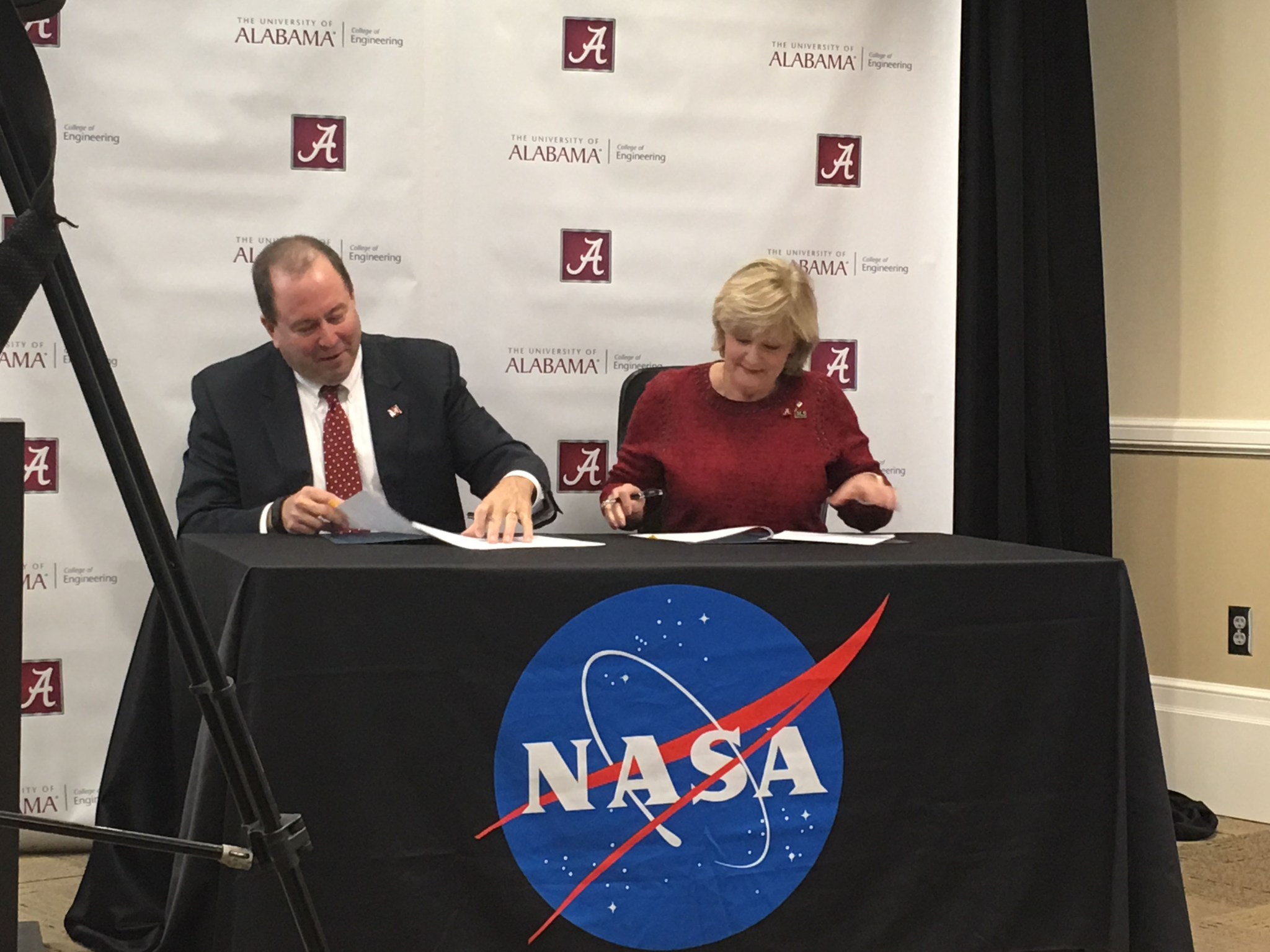
Marshall Team Invited to Celebrate Native American History Month Nov. 29
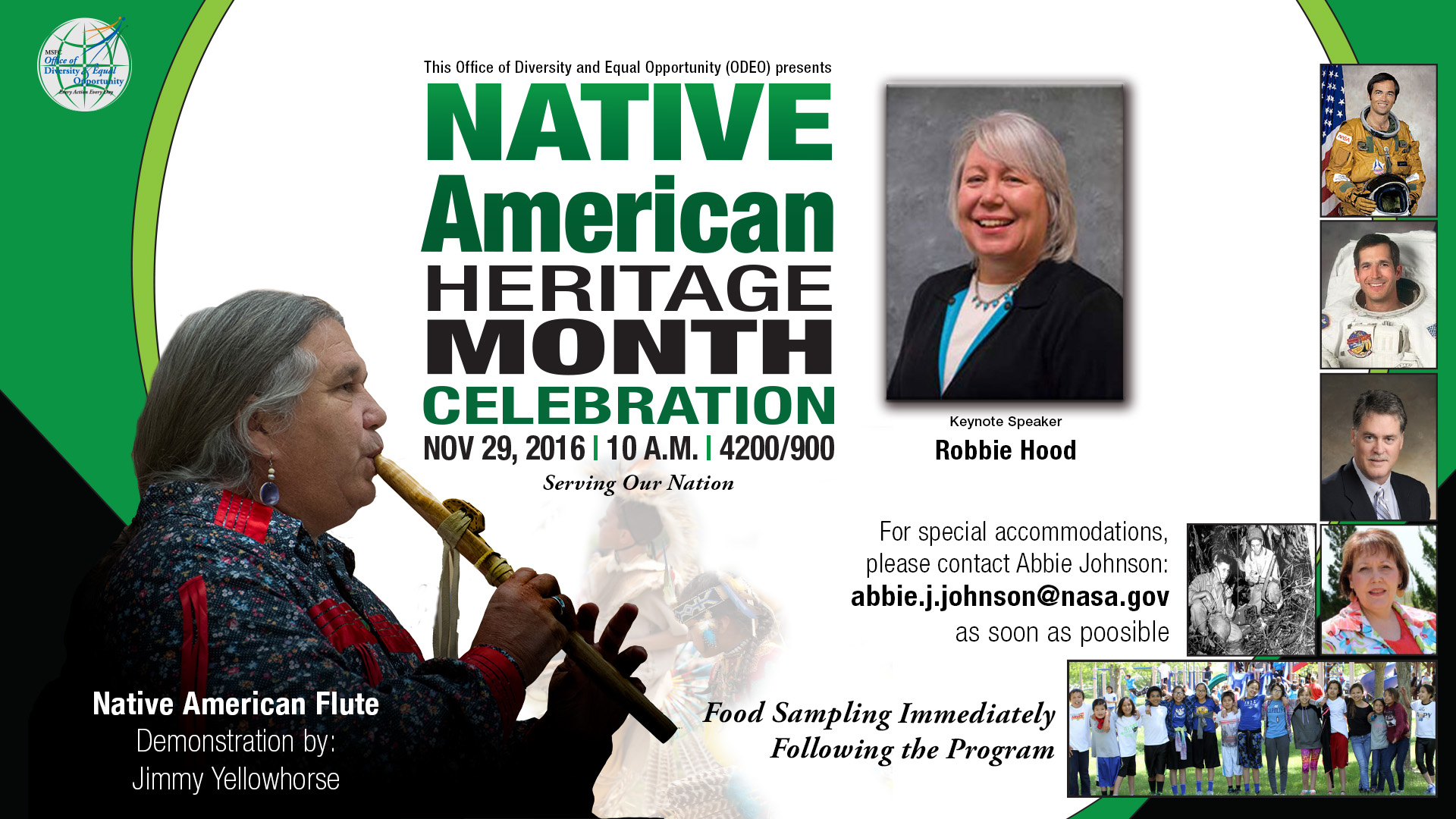
Marshall to Set Season Aglow With Dec. 1 Tree-lighting; Team Members Invited
NASA’s Marshall Space Flight Center will hold its annual holiday tree-lighting ceremony Dec. 1 at 4:35 p.m. Team members are invited to join Marshall Director Todd May — and a special visitor hailing from parts north — in front of Building 4200 for the festivities.
The event will include remarks by the director, a musical performance by children from the Marshall Child Development Center and complimentary hot cocoa and cookies, in addition to the official tree-lighting.
This Week in NASA History: Apollo 12 Returns to Earth — Nov. 24, 1969
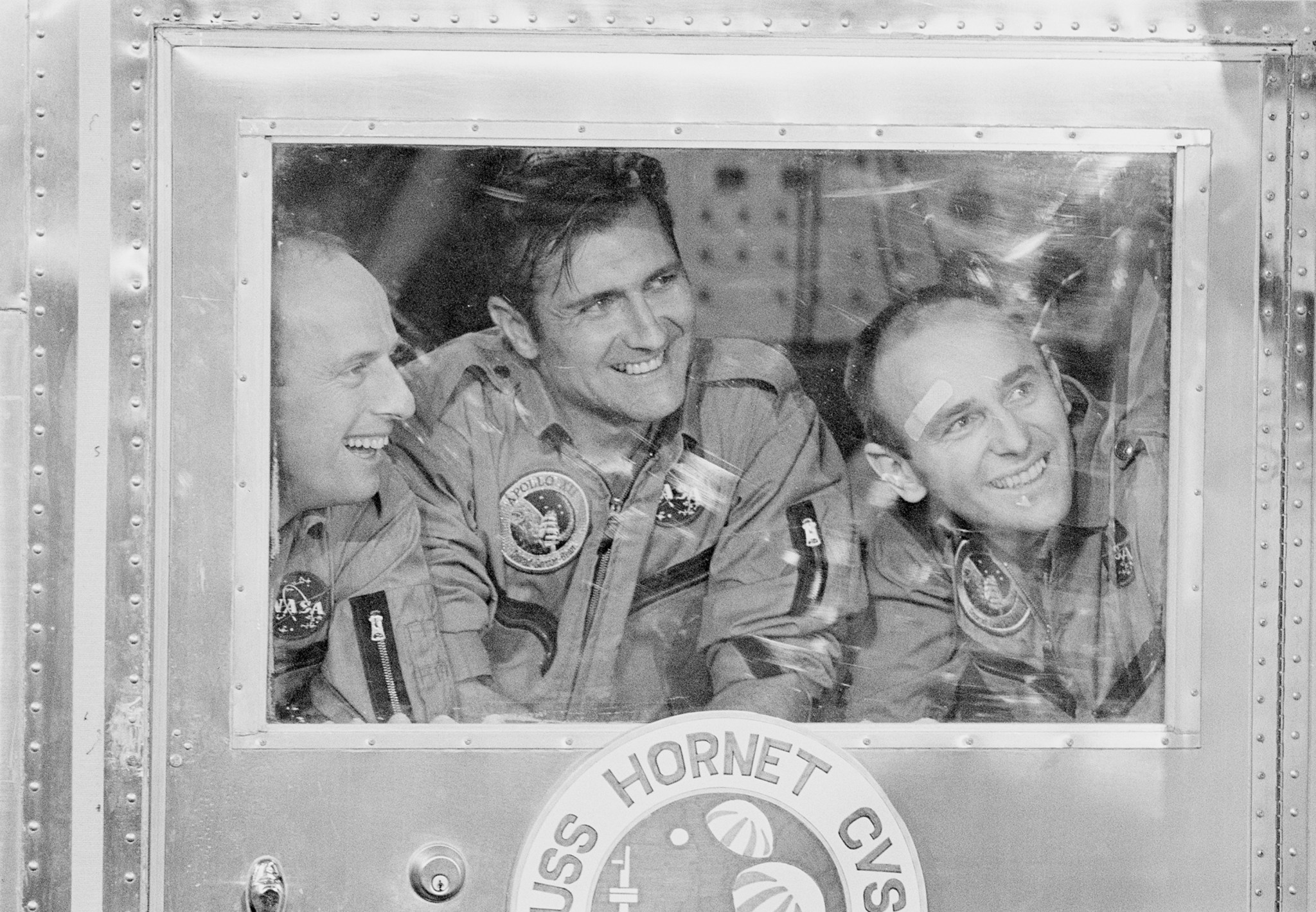
GOES-R Mission and Supermoon Featured on ‘This Week @NASA’
The launch of the GOES-R weather satellite and the rise of a Supermoon are featured in the latest edition of “This Week @NASA,” a weekly video program broadcast nationwide on NASA-TV and posted online.
Prior to the successful Nov. 19 nighttime launch of GOES-R, the first spacecraft in a new series of NASA-built advanced geostationary weather satellites, officials from NASA and National Oceanic and Atmospheric Administration participated in media events at Kennedy Space Center. Now in orbit, GOES-R will be known as GOES-16, providing images of weather patterns and severe storms as regularly as every five minutes or as frequently as every 30 seconds. These images can be used to aid in weather forecasts, as well as assist in longer term forecasting, such as in seasonal predictions and drought outlooks.
On Nov. 14, sky watchers across the world viewed the closest supermoon to Earth since 1948. A supermoon, which can appear up to 14 percent bigger and 30 percent brighter, occurs when the moon’s orbit is closest, or at perigee, to Earth. This was the only supermoon this year to be completely full. The next time a supermoon comes this close to Earth won’t be until 2034.
View this and previous episodes at “This Week @NASA” or at https://www.youtube.com/user/NASAtelevision.
Obituaries
Gabriel R. Wallace, 80, of Huntsville, died Nov. 14. He retired from the Marshall Center in 1999 as an engineering manager. He is survived by his wife, Elnora Huffines Wallace.


























